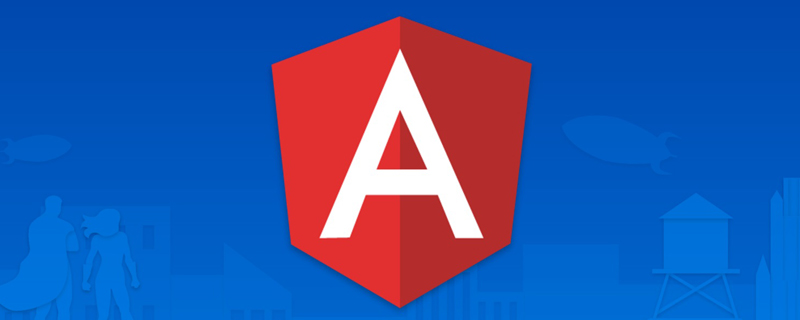Home > Article > Web Front-end > Angular learning talks about instructions and pipelines
This article will take you to understand the Directive and Pipe in angular, and briefly introduce the relevant knowledge points: built-in instructions and custom instructions, built-in pipes and custom pipes, I hope to be helpful!

Directive is the way provided by Angular to operate the DOM . Instructions are divided into attribute instructions and structural instructions.
#Attribute directive: To modify the appearance or behavior of an existing element, use [] to wrap it.
Structural instructions: add and delete DOM nodes to modify the layout, use * as the instruction prefix. [Related tutorial recommendations: "angular tutorial"]
1. Built-in instructions
1.1 *ngIf
Render DOM nodes or remove DOM nodes based on conditions .
<div *ngIf="data.length == 0">没有更多数据</div>
<div *ngIf="data.length > 0; then dataList else noData"></div> <ng-template #dataList>课程列表</ng-template> <ng-template #noData>没有更多数据</ng-template>
ng-template is used to define templates. After using ng-template to define a template, you can use ng-container and templateOutlet directives to use.
<ng-template #loading> <button (click)="login()">login</button> <button (click)="sigup()">sigup</button> </ng-template> <ng-container *ngTemplateOutlet="loading"> </ng-container>
1.2 [hidden]
Show DOM nodes or hide DOM nodes based on conditions (display).
<div [hidden]="data.length == 0">课程列表</div> <div [hidden]="data.length > 0">没有更多数据</div>
1.3 *ngFor
Traverse data to generate HTML structure
interface List {
id: number
name: string
age: number
}
list: List[] = [
{ id: 1, name: "张三", age: 20 },
{ id: 2, name: "李四", age: 30 }
]<li
*ngFor="
let item of list;
let i = index;
let isEven = even;
let isOdd = odd;
let isFirst = first;
let isLast = last;
"
>
</li><li *ngFor="let item of list; trackBy: identify"></li>
identify(index, item){
return item.id;
}2. Customization Command
Requirements: Set the default background color for the element, the background color when the mouse moves in, and the background color when the mouse moves out.
<div [appHover]="{ bgColor: 'skyblue' }">Hello Angular</div>import { AfterViewInit, Directive, ElementRef, HostListener, Input } from "@angular/core"
// 接收参的数类型
interface Options {
bgColor?: string
}
@Directive({
selector: "[appHover]"
})
export class HoverDirective implements AfterViewInit {
// 接收参数
@Input("appHover") appHover: Options = {}
// 要操作的 DOM 节点
element: HTMLElement
// 获取要操作的 DOM 节点
constructor(private elementRef: ElementRef) {
this.element = this.elementRef.nativeElement
}
// 组件模板初始完成后设置元素的背景颜色
ngAfterViewInit() {
this.element.style.backgroundColor = this.appHover.bgColor || "skyblue"
}
// 为元素添加鼠标移入事件
@HostListener("mouseenter") enter() {
this.element.style.backgroundColor = "pink"
}
// 为元素添加鼠标移出事件
@HostListener("mouseleave") leave() {
this.element.style.backgroundColor = "skyblue"
}
}The role of the pipe is to format component template data.
1. Built-in pipeline
date date format
currency Currency formatting
uppercase Convert to uppercase
lowercase Convert to lowercase
{{ date | date: "yyyy-MM-dd" }}
2. Custom pipeline
Requirement: The specified string cannot exceed the specified length<!-- 这是一... -->
{{'这是一个测试' | summary: 3}}// summary.pipe.ts
import { Pipe, PipeTransform } from '@angular/core';
@Pipe({
name: 'summary'
});
export class SummaryPipe implements PipeTransform {
transform (value: string, limit?: number) {
if (!value) return null;
let actualLimit = (limit) ? limit : 50;
return value.substr(0, actualLimit) + '...';
}
}// app.module.ts
import { SummaryPipe } from './summary.pipe'
@NgModule({
declarations: [
SummaryPipe
]
});For more programming related knowledge, please visit: Programming Video! !
The above is the detailed content of Angular learning talks about instructions and pipelines. For more information, please follow other related articles on the PHP Chinese website!